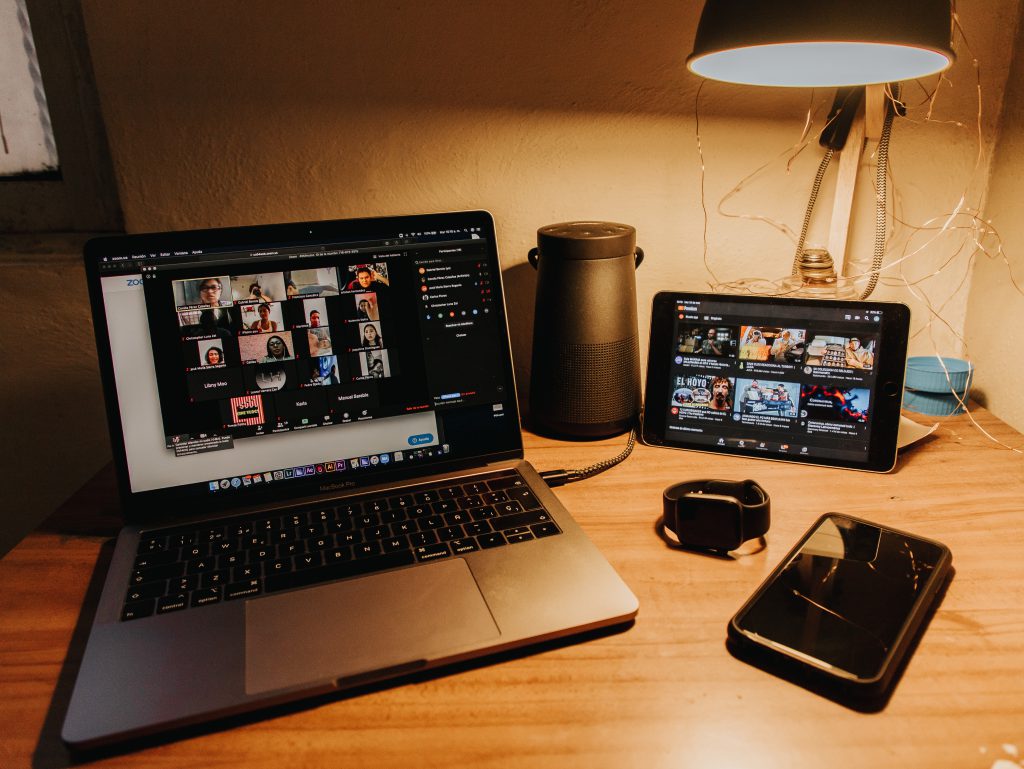Caring for Remote Employees’ Wellbeing: Part 1 Social Connection

So what do we mean when we talk about employee wellbeing? There is tons of information out there about wellbeing and wellness and their exact meanings and components. One definition of wellbeing that I particularly like is “enabling people to develop their potential, work productively and creatively, form positive relationships with others and meaningfully contribute to the community” (Foresight Mental Capital and Wellbeing Project 2008). If all of your employees were able to live out these components of wellbeing, it would definitely positively affect their work as well. And it is quite obvious that when employee wellbeing is low, so is work productivity, efficiency and satisfaction.
Now, with the rise in remote working because of COVID-19, it can be more difficult for an employer to have an impact on employee wellness. In addition, working from home can have varying effects on your workers’ wellness. That’s why in this series we will focus on the elements you, as an employer, can make the most impact on for your remote workers. We will define wellbeing as a feeling of happiness rooted in social connection, good physical health and good mental health. For this first installment of the series, we will focus on social connection and ways you can increase this in your teams, even virtually.
Social connection is something that can be hard to foster when employees are not physically working in the same place. However, even with remote workers it is pivotal to foster a sense of community. When people feel connected to their co-workers, not only do they feel happier, but there is also a higher level of accountability. Additionally, when coworkers are more comfortable with each other, they don’t hesitate to ask questions or get a second pair of eyes on the work they are doing. All of this hopefully equates to better and more efficient work done for the overall company or team. Here are some ideas to increase social connection on your team or business.
Add a quick non-work related check-in to an already existing weekly standup or meeting you have with your team. It’s important to have a more personal check-in that goes beyond just, “how is everyone doing this morning?” Before you think that this might be too personal for work, realize that this check-in can simply be a question you ask at the beginning of a meeting to spark conversation. The point is to get real interaction between your employees or team members. Your question could be thought-provoking, like:
- What’s something you’ve learned recently?
- What are you most excited about at the moment?
- If you could wake up with a new habit formed, what would it be?
Or your questions could be silly, like:
- If you had a magic tree in your backyard that grew anything you wanted, what would you have it grow?
- Would you rather not be able to stop dancing or not stop singing?
It really doesn’t matter what you ask, you can get creative with it. What matters is that you start a regular routine of having fun genuine conversations with coworkers.
When having your check-in meeting with remote team members, make sure everyone knows to have their video on. When team members can see each other’s faces, they are a lot more engaged and willing to participate in the conversation. Also, make sure to start, not end, your meeting with the fun question. People tend to feel rushed to get off a call towards the end of a meeting. But if you start the meeting with a question, this opens people up and sets an upbeat tone for the rest of your meeting.
Challenges are great ways to get coworkers to bond over things that are not work-related. We all know about corporate step challenges. These can be a great initiative for making employees think about activity daily and participate in healthy behaviors. Additionally, the added bit of healthy competition can bring teams or departments closer together if they are competing against other departments. Increase employee engagement by having rewards and a leaderboard keeping track of top employees or teams.
You can get creative with what type of challenge you choose. Here are some examples:
- Heart Rate Challenge
- Virtual Workout Class Challenge
- Hours of Sleep Challenge
What’s great about company challenges is that participants take part in these challenges on their own time and even a remote workforce can take part. Company-wide fitness challenges obviously are great for increasing physical health, but their added bonus is increasing social connection on a team.
Here at PUML we have the best platform for hosting your company challenge, with rewards and a leaderboard built in to help keep employee engagement up – learn more here.
Have a designated “space” where co-workers can discuss things happening in the world, their life or anything that’s not related to work. This could be a channel in slack or another similar communication tool. Another way to encourage this is by having virtual “coffee breaks”. Giving remote workers a place to form connections with their co-workers, decreases their levels of loneliness and isolation.
Just remember that employee wellbeing impacts every facet of your business and it is something you should take seriously as an employer. As you improve one element of wellbeing, you will improve the others, so continue to take small steps towards helping your employees gain better social, physical and mental health.
We’ve provided you with a few ideas on how to promote social connection at your company, especially for employees working from home. Try implementing one of these ideas and let us know how it goes in the comments. We may be biased, but we think PUML is the best platform on the market for promoting company wellness. To learn more about our corporate wellness platform or to request a demo for your company, visit our corporate wellness page.